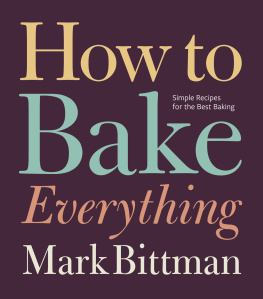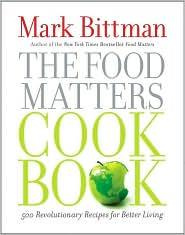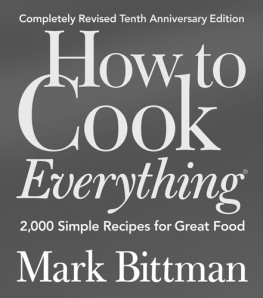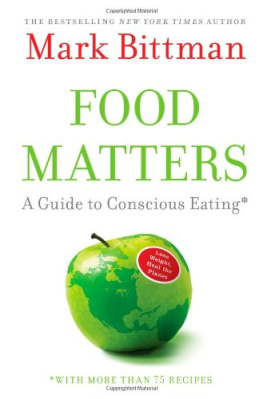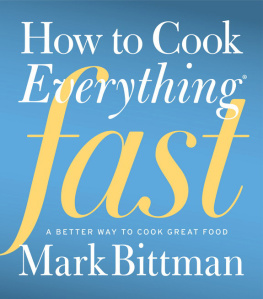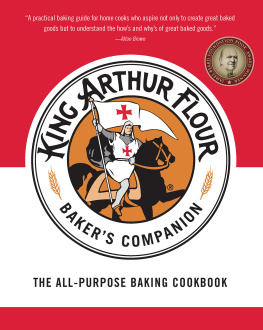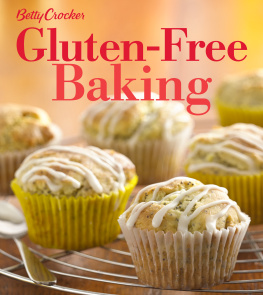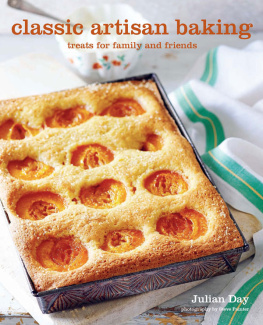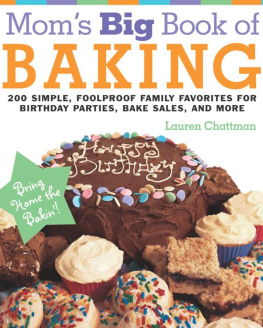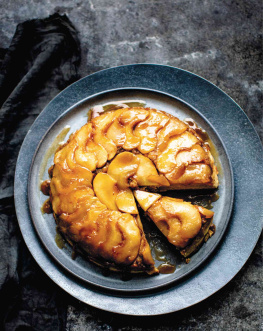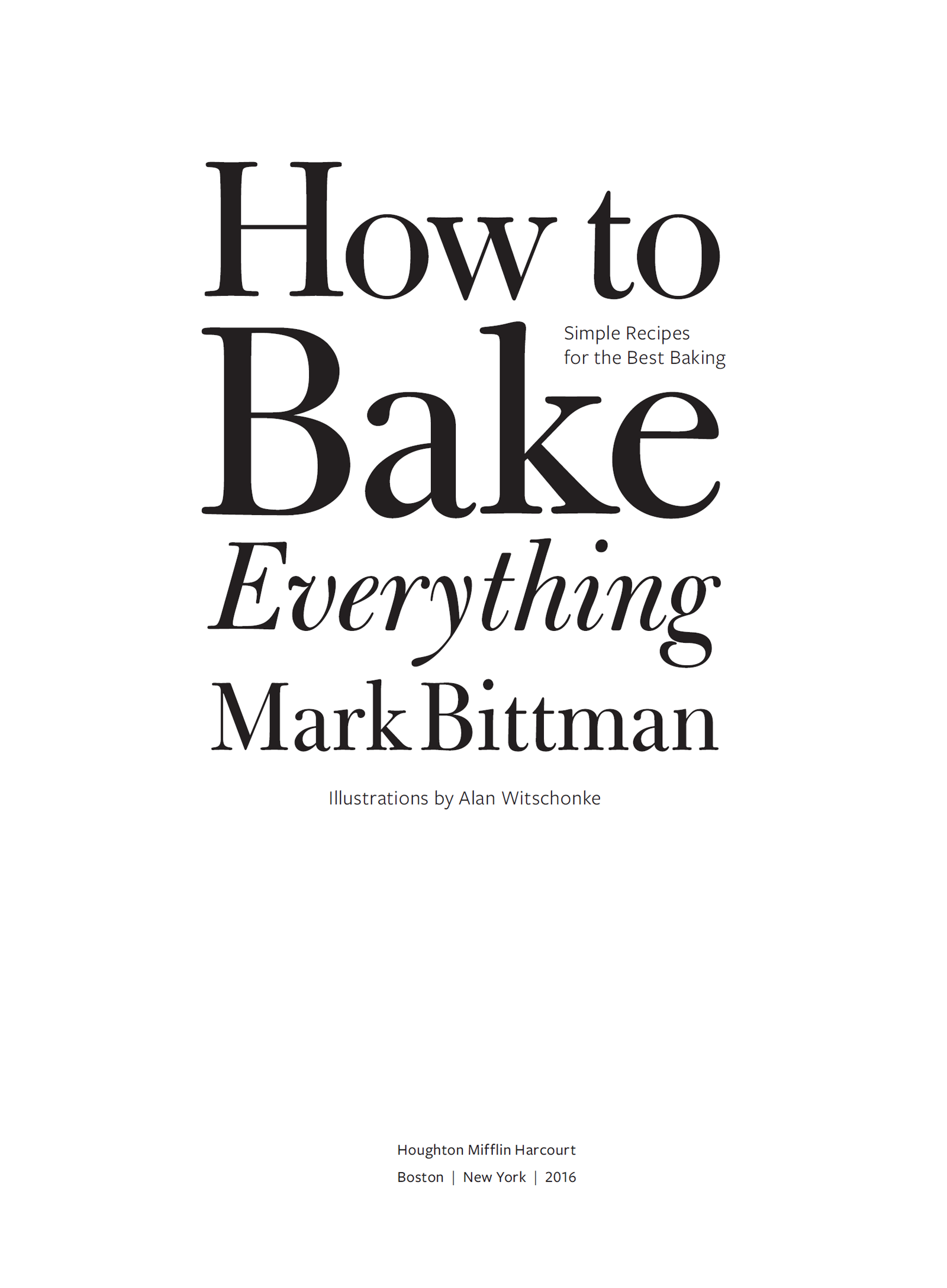Copyright 2016 by Double B Publishing, Inc.
All rights reserved.
For information about permission to reproduce selections from this book, write to or to Permissions, Houghton Mifflin Harcourt Publishing Company, 3 Park Avenue, 19th Floor, New York, New York 10016.
Library of Congress Cataloging-in-Publication Data is available.
Contents
The fundamentals: What you need to know to bake successfully.
Mildly sweet and wonderfully tender, these are some of the simplest and most favored treats to bake and share.
Recipes for hurried weekday mornings or leisurely brunches.
Something for everyone, plus tips for improvising or customizing your own favorite versions.
Cake, the ultimate baked dessert, in so many wayschocolate, one-bowl, flourless, spiced, many-layered, special occasion, and more.
Rustic fruit pies, creamy custard pies, no-bake wonders, and dozens of mix-and-match options for endless variety.
These are some of the easiest ways to indulge a sweet tooth; try them on their own or serve your baked desserts la mode.
If youve never made these from scratch, the simplicity and variety will inspire and excite you.
Bread is easyseriously. Heres all you need to know, whether youre a first-time bread baker or looking to build on your skills.
The iconic doughs, from pte choux to puff pastry and croissants, demystified, with pastry-shop-worthy projects and easy variations.
Baking isnt limited to breads and desserthere are recipes for quiches, souffls and tarts, pot pies, and more.
The icing on the cake: finishing touches that can transform the simplest dishes and make a good dessert fabulous.
Favorite recipes, flavor combinations, and other handy lists and charts.
Complete Recipe List
Acknowledgments
Baking, as all cooks know, is different, though Ive tried to make even challenging recipes as simple and accessible as everything else in the How to Cook Everything series. I could not have done that alone so, as usual, I have many people to thank in helping to produce this book. Chief among them is Jennifer Griffin, who oversaw everything. Its worth noting that Jen edited the original How to Cook Everything book, so her (triumphant) return to the team is fitting. Remy Robert and Daniel Meyer did much of the heavy lifting on this book with an able assist from Julie Myers.
Many thanks to my longtime literary agent, Angela Miller; Kerri Conan, my right hand; and Kelly Doe, whose incredible design has enhanced every How to Cook Everything book for the last ten years or so. My other valued colleagues include Emily Stephenson, Pam Hoenig, Daniel Meyer, Julie Myers, and Chris Benton. Thanks as well to our recipe testers: JoAnne, Maya, and Ruby Ling, Marisa Rendina, David Bowers, Alison Spiegel, Grace Rosanova, and Alex Ramirez.
The people at Houghton Mifflin Harcourt labored valiantly behind the scenes to publish this book. Thanks to editors Stephanie Fletcher and Adam Kowit, publishers Bruce Nichols and Natalie Chapman, publicist Rebecca Liss, marketing executives Brad Parsons and Jessica Gilo, editorial associate Molly Aronica, managing editor Marina Padakis Lowry, production editor Jamie Selzer, art directors Melissa Lotfy and Michaela Sullivan, production coordinators Tom Hyland and Kevin Watt, and production and editorial operations manager David Futato.
Introduction
How to Cook Everything, in all its installments, has one guiding principle: Everyone can, and should, cookand feel comfortable doing it. The world is a better place when were in the kitchenwhen we choose the ingredients ourselves, lessen our dependence on industrial agriculture and processed foods, participate firsthand in the preparation, and share the experience with others. This book is structured to make baking as approachable and enjoyable for you as it is for mewhich is to say very .
By focusing on core recipes with numerous opportunities for variation, my hope is not to make you an expert recipe follower (as so many baking books do), but to help you become a confident, intuitive baker, capable of discerning which rules you must follow and which of the many you can and should break. From foolproof drop cookies to perfect croissants, the recipes in this book offer something for everyone.
Baking isnt magic, like all cooking. But sometimes, and especially to the novice, it can seem that way. Nowhere else in the kitchen can you start with such a small arsenal of humble ingredients and spin them into so many remarkable things. And the transformation that happens in the ovena raw, wet batter or dough goes in; tender, golden treats emergeproduces a particular sense of pride, even a thrillwhether youre an experienced baker or a first-timer. The smell that fills the house is often reason enough to take up baking.
Baking is fundamentally communal. To bake is to celebrate and to share: We take muffins to our new neighbors, swap cookies at the holidays, cut cakes at our weddings, eat pies on Thanksgiving. Since baked goods are hardly a necessity, they always feel a little indulgent. A brown-bag lunch is improved by a cookie, and dinner is made complete with a loaf of bread. Yes, pretty much every conceivable kind of baked good is readily available at bakeries, supermarkets, and even convenience stores, but making them yourself is not only gratifying but a superior way to bring more real food into your diet and that of your loved ones. Baking may be an indulgence, but your own baked goods are always a step above commercially produced ones.
Some people mistakenly view cooking and baking as opposites: They believe the former welcomes improvisation and rule breaking while the latter is unforgiving, meticulous, and super-scientific. Even perfectly capable cooks may decide they dont have the time, skills, or patience necessary to bake successfully. But it should go without saying that if you can cook you can bake. Many aspects of baking, from flavoring a cake to filling a pie to the frosting or sauce you use to top it all off, are so easy that theyll become second nature in no time. In baking, you still have creative license, and the payoff is almost always delicious and crowd-pleasing.
Of course, some details are nonnegotiable. You cant drastically reduce or increase some ingredients without noticing an effect. But so many people of all different skill levels start baking and fall in love with it precisely because of these simple, predictable rules. When you combine flour with yeast and water and time and heat, it will become bread. Cook sugar long enough and it becomes caramel.
To set you up for success, Ill set the record straight about some baking myths. Ill help you stock your kitchen with the essential ingredients and equipment for baking, and teach you the fundamental techniques that youll use in the recipes that follow. With simple ingredient charts, advice on the tools you need (and the ones you dont), and other basic tips, this chapter gives you all you need to get started.
What Is Baking?
Baking uses the dry heat of an oven to thoroughly cook foods while creating a firm, browned exterior. Thats also the definition of roasting, which isnt covered in this book for one main reason: Most things you roast are already solidthink vegetables or meatwhile baking usually starts with either a semiliquid or a fairly wet solid, like batter, custard, or dough. The higher moisture that you find in most baking is responsible for the texture and delicacy you get in the finished product. Heat causes that moisture to steam and jump-starts all the other chemical reactions: raising the dough, melting the chocolate, browning the crust, and so on.

